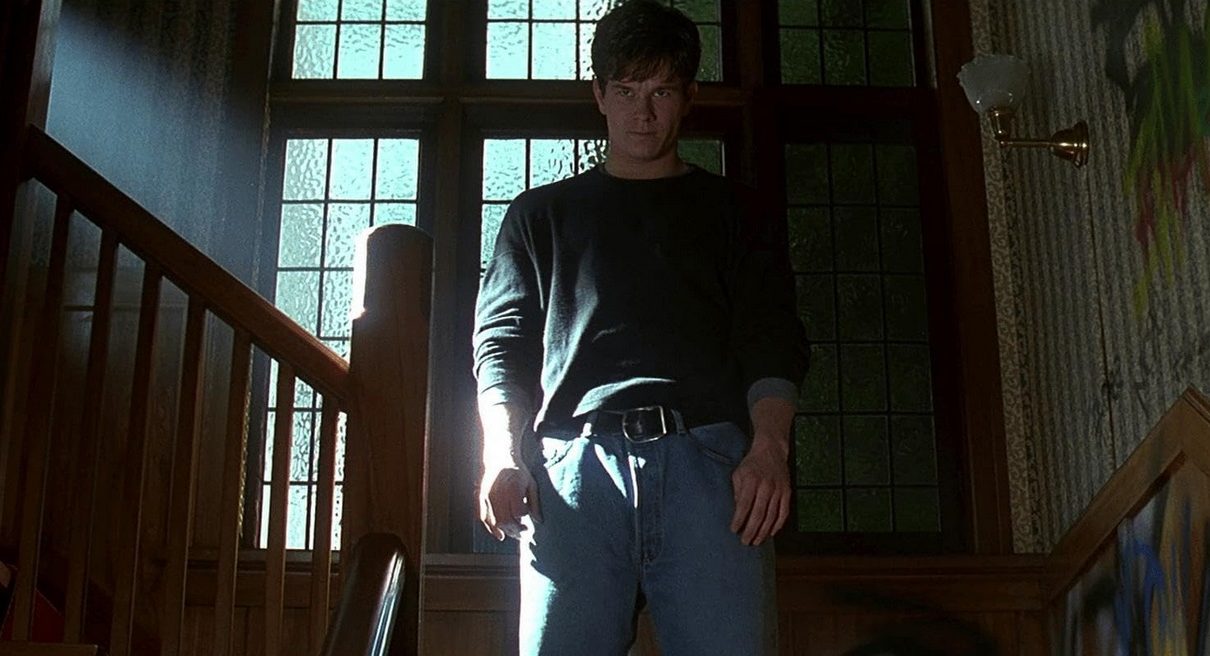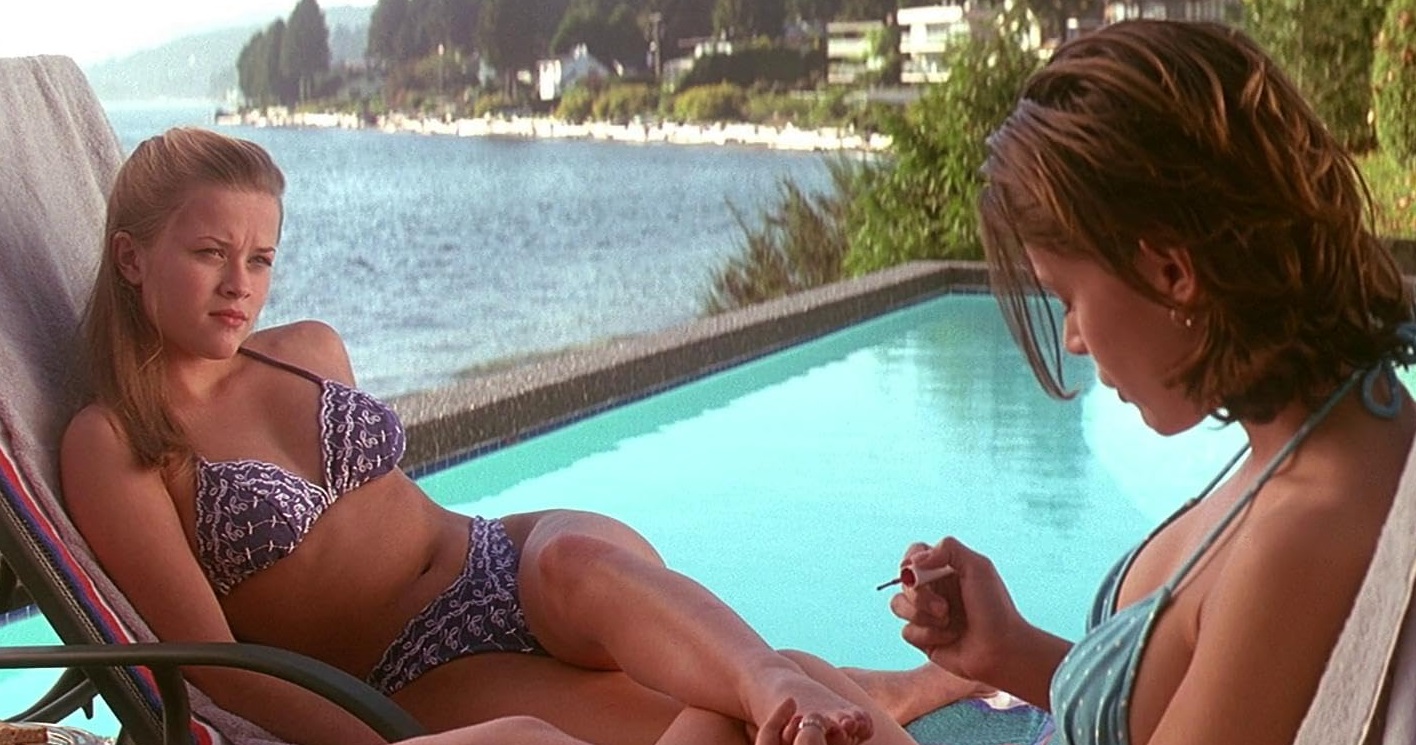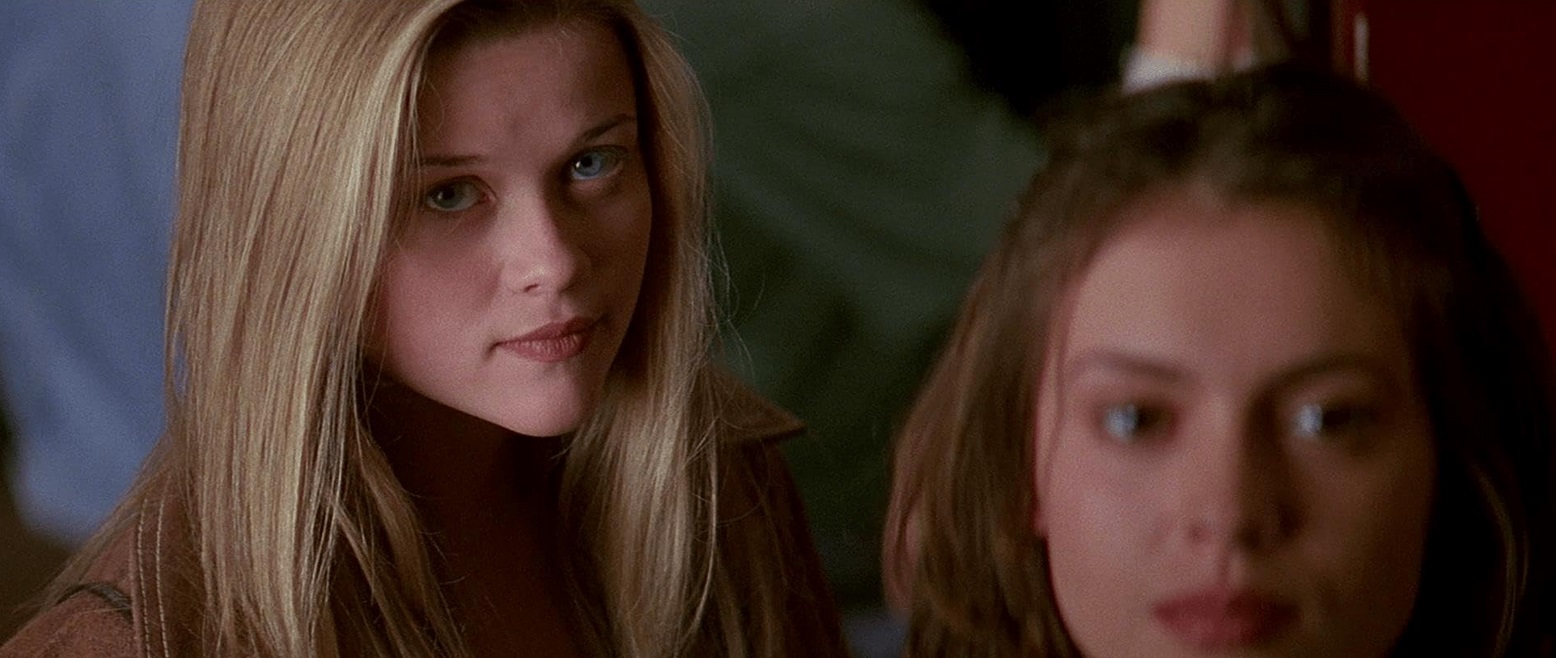Helmed by James Foley, ‘Fear’ provides its audience with a slew of unsettling emotions that dips its feet in several genres. The 1996 film dances with elements from the coming-of-age, erotic, drama, and horror genres and packs them together into a memorable thriller. The movie centers around 16-year-old Nicole Walker, who is keen to explore life as much as most teenagers at that age. She is introduced to a young man named David McCall, and sparks fly. As they fall for each other, alarmingly dark traits of McCall are revealed that ensue deceit, violence, and a parent’s absolute worst nightmare.
Driven by the compelling performances of Reese Witherspoon, Mark Wahlberg and other talented members of the cast in a tense setting, the solid narrative imposes itself with realistic character expositions and suspicions that might make the audience wonder about the possibility of it being based on a true story.
Fear is a Compelling Work of Fiction
‘Fear’ is not rooted in reality. While the realistic narrative might make one believe it is rooted in reality, it comes from the brilliant mind of the writer, Christopher Crowe. The screenwriter of ‘Whispers in the Dark’ has been known for indulging in an apparatus of thrills, mysteries, and erotica, churning out a well-worked formula that’s visible in ‘Fear’ as well. Additionally, director James Foley also possesses a forte of the same, having worked on ‘After Dark, My Sweet,’ ‘Reckless,’ ‘Fifty Shades Darker’ and ‘Fifty Shades Freed.’ Crowe and Foley employed their experience and creative vision, accompanied by their similar tastes and abilities, to formulate ‘Fear’ and its evergreen thrill mechanic.

Interestingly, ‘Fear’ shares identical resemblances to an Indian film of the same name. ‘Fear’ which translates to ‘Darr’ in Hindi, stars renowned Indian names such as Sunny Deol, Juhi Chawla, and Shah Rukh Khan and explores equivalent themes of obsession and violence. While not a remake of Yash Chopra’s 1993 Indian film, David’s character arch in ‘Fear’ is comparable to that of Rahul’s (Shah Rukh Khan) in ‘Darr’. The violent aspect and the primary antagonist’s obsessive nature are redeemed in ‘Fear’ with several tweaks to fit its viewer’s demographic and creative uniqueness. In ‘Darr’ Rahul becomes obsessed with Kiran and constantly stalks her. He sees Kiran as a possession, quite similar to how David sees Nicole. Rahul becomes progressively violent when he hears the news that Kiran is to be wed. He does anything in his power to stop the proceedings and forcefully get Kiran for himself.
While ‘Darr’ and ‘Fear’ do share identicality, the Indian film is not a coming-of-age teen thriller. The genre, which was redefined and popularized in 90s Western cinema, diversified and delved into many deeper and darker themes previously unexplored. The state of each country’s film industry was quite drastically different. ‘Darr,’ although released 3 years before ‘Fear,’ catered to an Indian audience who would be more receptive to its approach, while ‘Fear’ dealt with a different demographic. The American film catered to an audience who were more receptive to a coming-of-age teen thriller. This is one of the most significant differences between the two films and played an important role in the way ‘Fear’ was depicted.
Apart from identical themes and obvious parallels, one could draw from the writer and director’s works, 80s and 90s films can also be referred to as inspirations for the film’s themes. It brought about a swift change in the way coming-of-age stories were illustrated on screen. Narratives weren’t solely on depicting innocence and nostalgia; they would move beyond and draw associations with adolescence and its changes. Filmmakers of that era were confronted by the truth that even teenagers did explore darker, more complex aspects of growing up.

While ‘Fear’ is by all means a thriller, it is also a coming-of-age tale, albeit that explores much darker themes than your average jaunt into something relatable and nostalgic. When we dig deeper into Nicole’s character, we see all the right traits found in a personality fit for a coming-of-age tale. Her journey of self-discovery begins upon her introduction in the film. During its progression, more hints are presented in the form of adolescent changes and their corresponding desires. As she matures, she looks through her father’s warnings about David, only for them to actually come true.
The rebellious nature and thrill-mongering of Nicole can be directly derived from her age. While David’s alluring charm plays more of a pivotal role in her acting the way she does, her age is its assistant. Her best friend, Margo (Alyssa Milano), is more adventurous and seeks more thrills than Nicole. She dives straight in, discussing with Nicole that she desires someone to want her, which is, in this case, one of David’s friends. Apart from David’s toxic demeanor, the differences between Nicole and Margo additionally set up a stage that ensues chaos ideal for coming-of-age stories told during this period of time — the 90s.
The decade recaptured the meaning of teenage dramas, adding a sense of surrealism. Some were brought forward by true stories, others by a fiction-oriented approach, picking up tropes from other films on the way, as is in ‘Fear.’ The conception of the film has not been directed accredited to any real-life incidents, but viewers will be able to recognize a formula or pattern that the creators have pursued. A pattern that has diversified extensively over the years. Through the adept flair of James Foley and the dark themes explored in Christopher Crowe’s defiant writing, ‘Fear’ boils down into a memorable thriller that doesn’t necessarily fit a single genre. Thus, we reiterate that ‘Fear’ is a work of fiction that owes a lot to the time it was made for its concepts and personalities, which are still being explored even to this day.
Read More: Best Coming of Age Movies on Netflix


You must be logged in to post a comment.